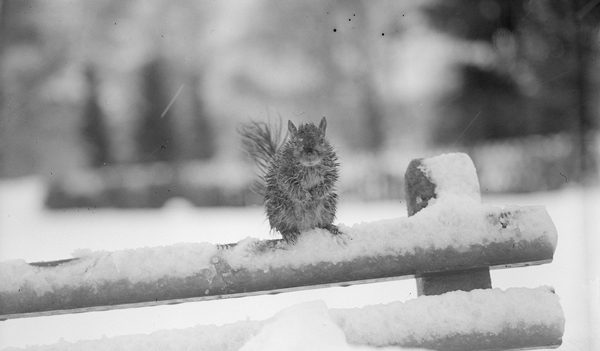Protecting Your Home in Extreme Cold
By Chris Williams on January 24, 2014.

It’s cold for everyone in New England right now!
In extended below-freezing weather like we’ve been having, you need to take some extra precautions to protect your plumbing and your home from damage. It may be too late and too cold to do the serious winterizing jobs like caulking outside openings and insulating walls and pipes, but there are easy steps you can take now to make sure neither you nor your pipes are freezing.
Maintain Even Warmth in Your Home
- Heat Unheated Areas. Try to keep the temperature throughout your house even; avoid cold spots by opening all vents. Do not set your thermostat below 55° for any area of your home. Try to get at least some heat into all areas. Open the door to any enclosed spaces not normally heated like the mechanical or utility room.
- Windows. Make sure storm windows are down and latched in place.
- Use Space Heaters. Place space heaters, according to directions, in cold areas of your home to temporarily heat that space. If your garage is not heated, place a space heater there as well to moderate the temperature and help keep any pipes in the garage wall from freezing. Keep the garage door closed.
Take Steps to Protect Your Pipes
- Main Shut-Off Valve. Make sure you know where your main shut-off valve is for your water system. Clear a path to the valve if it’s blocked by junk so you can quickly reach it in case of a plumbing emergency. Make sure everyone in your family knows where the shut-off valve is and how to use it.
- Outside Spigots. Exposed pipes can freeze quickly when temperatures are below 20°. Shut off the water to outside spigots if they have a separate valve, and drain the lines. Disconnect outside hoses and connectors from the spigot. Even if you have a frost-free spigot outside, leaving a hose connected can result in a crack when water is trapped. (I learned this the hard way.) Inexpensive insulated foam hose bib covers that fit over the spigot help hold warmth from the house.
- Pipes in Exterior or Uninsulated Walls. Check your home to find areas where water supply lines run either in exterior walls or in unheated spaces like basements, crawlspaces, or garages. Warm these pipes as best you can. To keep water from freezing in pipes that are in outside walls, open the cabinet doors under sinks which back up to an exterior wall to warm pipes in that space. Let faucets with exterior wall pipes drip slightly to keep water from freezing; make sure both the hot and cold lines are open.
Don’t Forget Your Roof
- Roof gutters. Clean your roof gutters. Blocked gutters increase the chance of ice dams forming on the roof.
- Attic Ventilation. Check your attic to make sure attic vents and soffits are clear. Good attic ventilation is necessary to keep ice dams from forming on the roof. You don’t want the attic temperature warmer than the outdoors or snow will melt and refreeze near the roof edge.
If You Go Away
- If winter conditions warrant, consider shutting off the water to your house and draining the system so you don’t have to worry about freezing pipes while you’re gone.
- Make sure you leave some heat on while you’re gone. Maintain at least 55° in all spaces. Make sure your thermostat has a new battery.
Photo credit: Boston Public Library / Foter.com / CC BY-NC-ND
Stay up-to-date with Colonial Pest’s email newsletter!